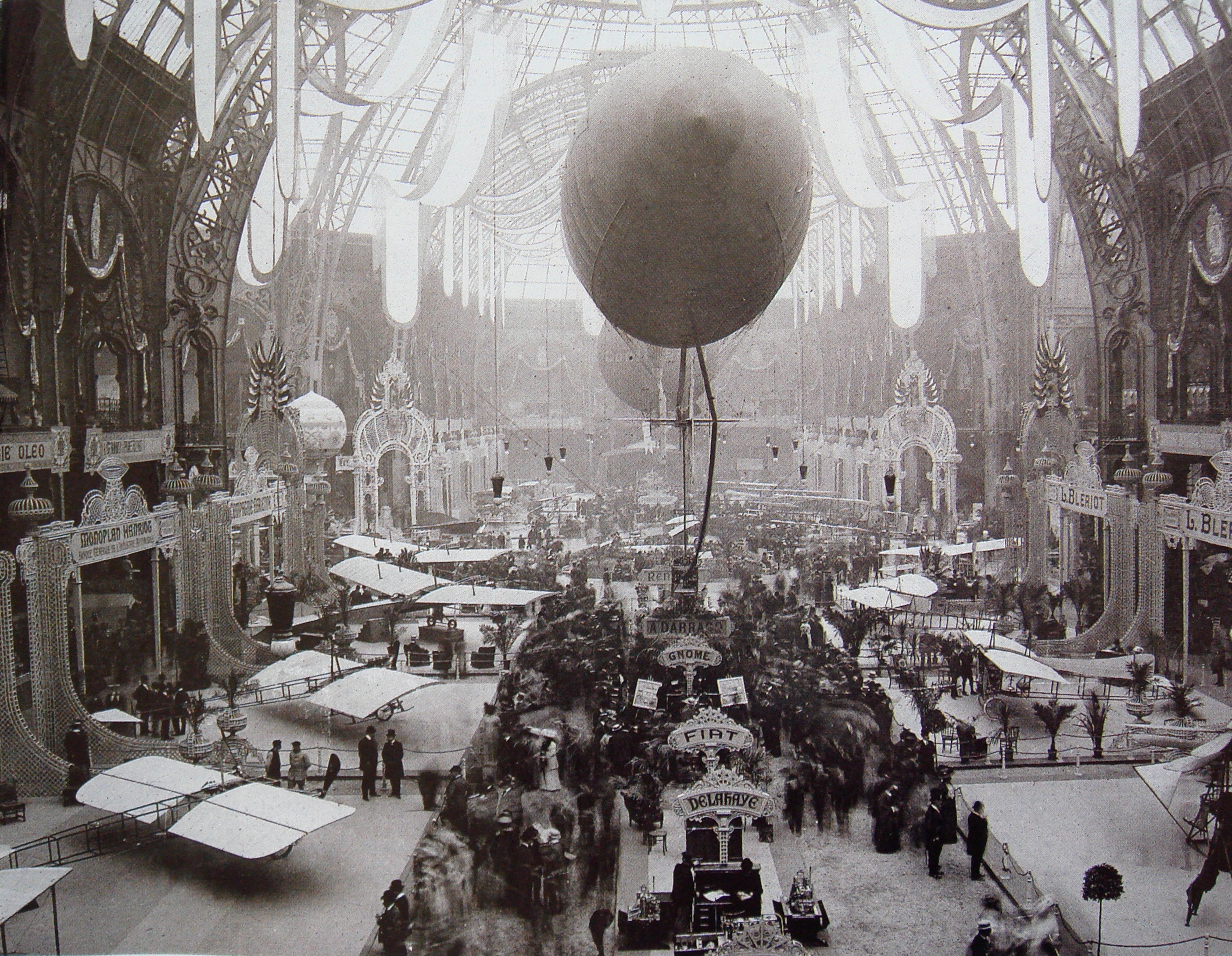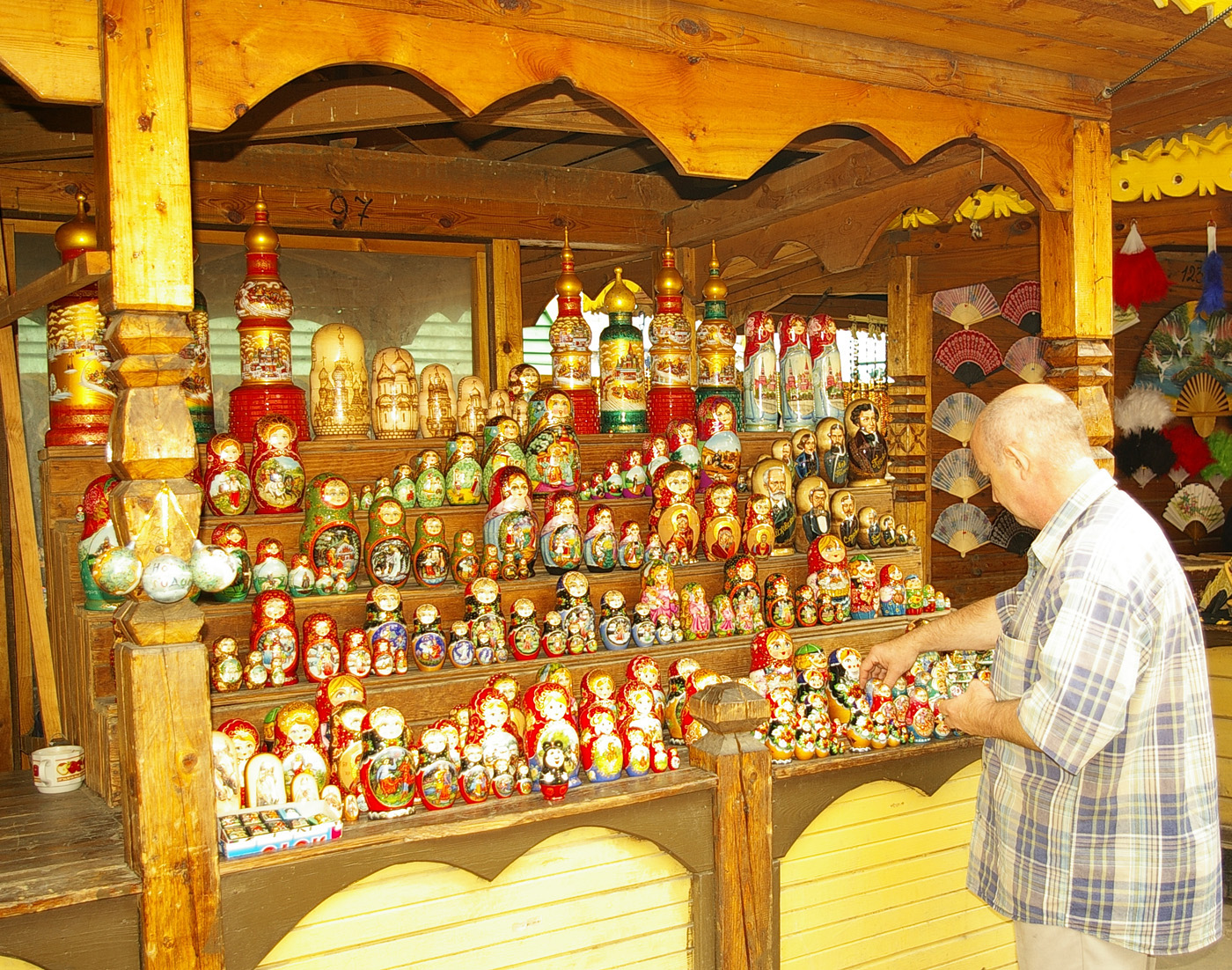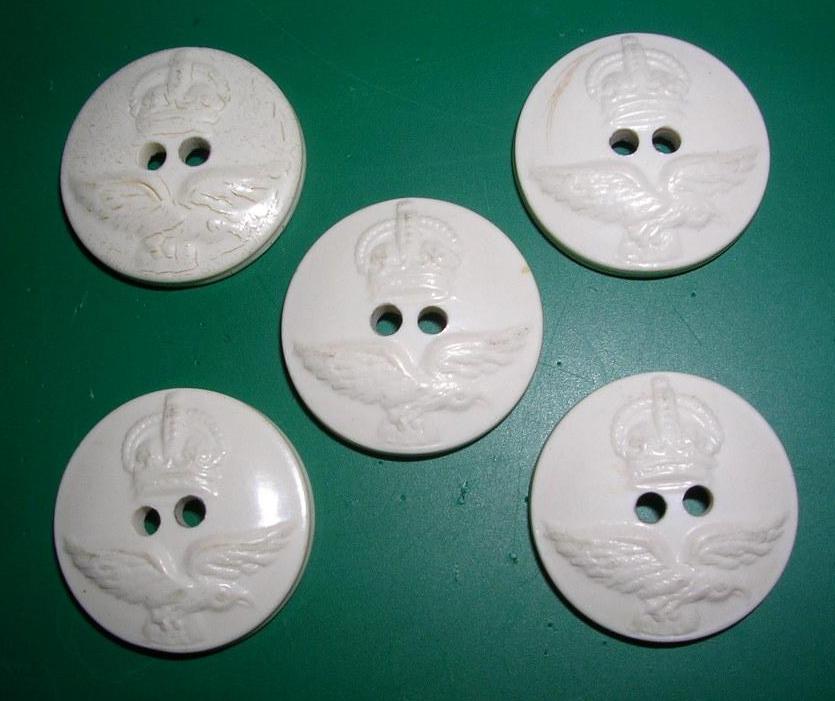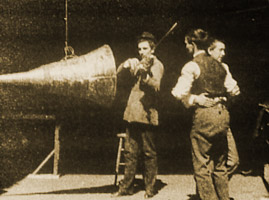|
Paris 1900 Exposition
The Exposition Universelle of 1900 (), better known in English as the 1900 Paris Exposition, was a world's fair held in Paris, France, from 14 April to 12 November 1900, to celebrate the achievements of the past century and to accelerate development into the next. It was the sixth of ten major expositions held in the city between 1855 and 1937. It was held at the esplanade of Les Invalides, the Champ de Mars, the Trocadéro and at the banks of the Seine between them, with an additional section in the Bois de Vincennes, and it was visited by more than fifty million people. Many international congresses and other events were held within the framework of the exposition, including the 1900 Summer Olympics. Many technological innovations were displayed at the Fair, including the '' Grande Roue de Paris'' ferris wheel, the '' Rue de l'Avenir'' moving sidewalk, the first ever regular passenger trolleybus line, escalators, diesel engines, electric cars, dry cell batteries, electric fir ... [...More Info...] [...Related Items...] OR: [Wikipedia] [Google] [Baidu] |
International Recognized Exhibition
A world's fair, also known as a universal exhibition, is a large global exhibition designed to showcase the achievements of nations. These exhibitions vary in character and are held in different parts of the world at a specific site for a period of time, typically between three and six months. The term "world's fair" is commonly used in the United States, while the French term, ("universal exhibition") is used in most of Europe and Asia; other terms include World Expo or Specialised Expo, with the word expo used for various types of exhibitions since at least 1958. Since the adoption of the 1928 Convention Relating to International Exhibitions, the Paris-based Bureau International des Expositions (BIE) has served as an international sanctioning body for international exhibitions; four types of international exhibition are organised under its auspices: World Expos, Specialised Expos, Horticultural Expos (regulated by the International Association of Horticultural Producers), a ... [...More Info...] [...Related Items...] OR: [Wikipedia] [Google] [Baidu] |
Trolleybus
A trolleybus (also known as trolley bus, trolley coach, trackless trolley, trackless tramin the 1910s and 1920sJoyce, J.; King, J. S.; and Newman, A. G. (1986). ''British Trolleybus Systems'', pp. 9, 12. London: Ian Allan Publishing. .or trolleyDunbar, Charles S. (1967). ''Buses, Trolleys & Trams''. Paul Hamlyn Ltd. (UK). Republished 2004 with or 9780753709702.) is an electric bus that draws power from dual overhead wires (generally suspended from roadside posts) using spring-loaded or pneumatically raised trolley poles. Overhead line#Parallel overhead lines, Two wires, and two trolley poles, are required to complete the electrical circuit. This differs from a tram or streetcar, which normally uses the track as the return path, needing only one wire and one pole (or pantograph (transport), pantograph). They are also distinct from other kinds of Battery electric bus, electric buses, which usually rely on Automotive battery, batteries. Power is most commonly supplied as 600-volt ... [...More Info...] [...Related Items...] OR: [Wikipedia] [Google] [Baidu] |
Petit Palais
The (; ) is an art museum in the 8th arrondissement of Paris, France. Built for the Exposition Universelle (1900), 1900 Exposition Universelle ("universal exhibition"), it now houses the City of Paris Museum of Fine Arts (''Musée des beaux-arts de la ville de Paris''). The is located across from the on the former Avenue Nicolas II, today Avenue Winston-Churchill. The other façades of the building face the Seine and Champs-Élysées, Avenue des Champs-Élysées. The is one of fourteen museums of the City of Paris that have been incorporated since 1 January 2013 in the public corporation Paris Musées. It has been listed since 1975 as a by the Ministry of Culture (France), Ministry of Culture. Petit Palais, actuellement musée des Beaux-Arts de la Ville de Paris History Design competition In 1894 a competition was held for the 1900 Exhibition area. The Palais de l'Industrie from the 1855 World's Fair was considered unfitting and was to be replaced by something new for the 19 ... [...More Info...] [...Related Items...] OR: [Wikipedia] [Google] [Baidu] |
Grand Palais
The (; ), commonly known as the , is a historic site, exhibition hall and museum complex located in the 8th arrondissement of Paris between the Champs-Élysées and the Seine, France. Construction of the began in 1897 following the demolition of the Palais de l'Industrie (Palace of Industry) to prepare for the Exposition Universelle (1900), Universal Exposition of 1900. That exposition also produced the adjacent and Pont Alexandre III. The building was designed to be a large-scale venue for official artistic events. A pediment on the building refers to this function with an inscription that reads, "a monument dedicated by the Republic to the glory of French art." Designed according to Beaux-Arts architecture, Beaux-Arts tastes, the building features ornate stone facades, glass vaults and period innovations that included iron and Steel frame, light steel framing and reinforced concrete. It is listed as a historic monument () by the Ministry of Culture (France), Ministry of C ... [...More Info...] [...Related Items...] OR: [Wikipedia] [Google] [Baidu] |
Colonialism
Colonialism is the control of another territory, natural resources and people by a foreign group. Colonizers control the political and tribal power of the colonised territory. While frequently an Imperialism, imperialist project, colonialism can also take the form of settler colonialism, whereby settlers from one or multiple colonizing metropoles occupy a territory with the intention of partially or completely supplanting the existing population. Colonialism developed as a concept describing European colonial empires of the modern era, which spread globally from the 15th century to the mid-20th century, spanning 35% of Earth's land by 1800 and peaking at 84% by the beginning of World War I. European colonialism employed mercantilism and Chartered company, chartered companies, and established Coloniality of power, coloniality, which keeps the colonized socio-economically Other (philosophy), othered and Subaltern (postcolonialism), subaltern through modern biopolitics of Heterono ... [...More Info...] [...Related Items...] OR: [Wikipedia] [Google] [Baidu] |
Art Nouveau
Art Nouveau ( ; ; ), Jugendstil and Sezessionstil in German, is an international style of art, architecture, and applied art, especially the decorative arts. It was often inspired by natural forms such as the sinuous curves of plants and flowers. Other characteristics of Art Nouveau were a sense of dynamism and movement, often given by asymmetry or whiplash lines, and the use of modern materials, particularly iron, glass, ceramics and later concrete, to create unusual forms and larger open spaces.Sembach, Klaus-Jürgen, ''L'Art Nouveau'' (2013), pp. 8–30 It was popular between 1890 and 1910 during the Belle Époque period, and was a reaction against the academicism, eclecticism and historicism of 19th century architecture and decorative art. One major objective of Art Nouveau was to break down the traditional distinction between fine arts (especially painting and sculpture) and applied arts. It was most widely used in interior design, graphic arts, furniture, glass ... [...More Info...] [...Related Items...] OR: [Wikipedia] [Google] [Baidu] |
Matryoshka Doll
Matryoshka dolls (), also known as stacking dolls, nesting dolls, Russian tea dolls, or Russian dolls, are a set of wooden dolls of decreasing size placed one inside another. The name ''Matryoshka'' is a diminutive form of ''Matryosha'' (), in turn a hypocorism of the Russian female first name '' Matryona'' (). A set of matryoshkas consists of a wooden figure, which separates at the middle, top from bottom, to reveal a smaller figure of the same sort inside, which has, in turn, another figure inside of it, and so on. The first Russian nested doll set was made in 1890 by wood turning craftsman and wood carver Vasily Zvyozdochkin from a design by Sergey Malyutin, who was a folk crafts painter at Abramtsevo. Traditionally the outer layer is a woman, dressed in a Russian sarafan dress. The figures inside may be of any gender; the smallest, innermost doll is typically a baby turned from a single piece of wood. Much of the artistry is in the painting of each doll, which can be ... [...More Info...] [...Related Items...] OR: [Wikipedia] [Google] [Baidu] |
Galalith
Galalith (Erinoid in the United Kingdom) is a synthetic plastic material manufactured by the interaction of casein and formaldehyde. The commercial name is derived from the Ancient Greek words (, "milk") and (, "stone"). It is odourless, hard, resists humidity to a certain degree, is antistatic, also an electrical insulator and virtually nonflammable. It was produced under a plethora of other commercial names such as aladdinite (in the US), Casolith (in the Netherlands) and lactoloid (in Japan). Discovery In 1893, French chemist Auguste Trillat discovered the means to insolubilize (i.e., to make a substance incapable of being dissolved in a liquid, especially water) and harden considerably casein by immersion in formaldehyde, also preventing it from decomposing via micro-organisms and water like older 19th century "moldable casein" formulations preceding his discovery which had an extremely limited lifespan and low reliability overall due to lack of formaldehyde and us ... [...More Info...] [...Related Items...] OR: [Wikipedia] [Google] [Baidu] |
Sound Film
A sound film is a Film, motion picture with synchronization, synchronized sound, or sound technologically coupled to image, as opposed to a silent film. The first known public exhibition of projected sound films took place in Paris in 1900, but decades passed before sound motion pictures became commercially practical. Reliable synchronization was difficult to achieve with the early sound-on-disc systems, and amplification and recording quality were also inadequate. Innovations in sound-on-film led to the first commercial screening of Short film, short motion pictures using the technology, which took place in 1923. Before sound-on-film technology became viable, soundtracks for films were commonly played live with organs or pianos. The primary steps in the commercialization of sound cinema were taken in the mid-to-late 1920s. At first, the sound films which included synchronized dialogue, known as "talking pictures", or "talkies", were exclusively shorts. The earliest feature fil ... [...More Info...] [...Related Items...] OR: [Wikipedia] [Google] [Baidu] |
Electric Fire Engine
An electric fire engine is a fire engine that is powered by an electric motor—essentially, an electric vehicle designed and used for firefighting. Electric fire engines were first proposed in the 19th century to replace the steam pumpers used for firefighting. The electric motor was claimed to be simpler, cleaner, and faster in operation, would save money, and require less maintenance than the steam fire engine. Though production of most electric-powered fire engines ended in the early 20th century when they were superseded by diesel-powered fire engines, they have seen a revival in the 21st century, with fire engine manufacturers such as Rosenbauer and Pierce Manufacturing designing their own electric fire engines. History Schuyler Wheeler invention American inventor Schuyler Wheeler patented an electric fire engine system in the United States in 1885. He filed his invention in 1882 and the patent was issued in 1885. The system included electrical infrastructure, with e ... [...More Info...] [...Related Items...] OR: [Wikipedia] [Google] [Baidu] |
Zinc–carbon Battery
A zinc–carbon battery (or carbon zinc battery in U.S. English) is the generic “heavy duty” disposable battery. It has been overtaken in recent times by the longer-lasting alkaline battery. A zinc–carbon battery is a dry cell that provides direct electric current from the electrochemical reaction between zinc (Zn) and manganese dioxide (MnO2) in the presence of an ammonium chloride (NH4Cl) electrolyte. It produces a voltage of about 1.5 volts between the zinc anode, which is typically constructed as a cylindrical container for the battery cell, and a carbon rod surrounded by a compound with a higher Standard electrode potential (positive polarity), known as the cathode, that collects the current from the manganese dioxide electrode. The name "zinc–carbon" is slightly misleading as it implies that carbon is acting as the oxidizing agent rather than the manganese dioxide. General-purpose batteries may use an acidic aqueous paste of ammonium chloride (NH4Cl) as electro ... [...More Info...] [...Related Items...] OR: [Wikipedia] [Google] [Baidu] |









